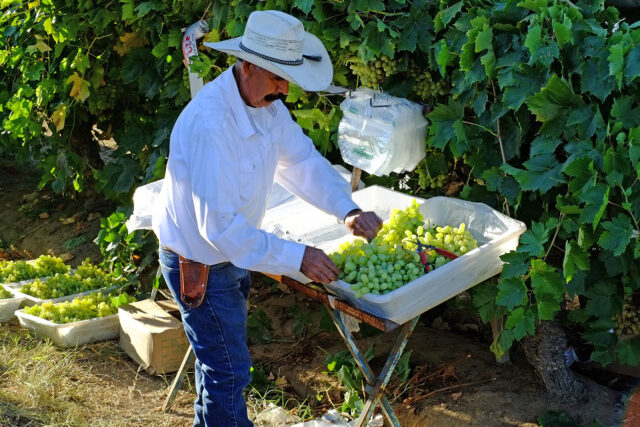The San Joaquin Valley and urban Southern California are worlds apart in many ways. Yet each face growing water challenges and a shared interest in ensuring reliable, affordable water supplies to safeguard their people and economies. Both regions’ water futures could be more secure if they take advantage of shared water infrastructure to jointly develop and manage some water supplies.
In a new report, we explore partnership opportunities to boost water resilience in both regions. By creating more flexible supplies, such partnerships can help water agencies adapt to the changing conditions expected under climate change. By coordinating the location of infrastructure investments, partnerships can help bring water to where and when it is most needed, at least cost.
Specifically, we look at water co-investments and water sharing agreements that would enhance drought-year supplies in Southern California, while augmenting average water deliveries to the San Joaquin Valley to help address groundwater sustainability. Although we explore some new models for cooperation, the basic idea is not new.
Indeed, water partnerships are already being used by California’s urban and agricultural communities to help manage droughts, growing water scarcity, and the high cost of water infrastructure. These partnerships often take advantage of the state’s water grid—a network of surface and underground storage and conveyance facilities. Several examples show the benefits of such collaborations:
Underground storage. Groundwater banks recharge aquifers during relatively wet years, so the water is available for use in dry years. The state’s largest banks are located in Kern County; others exist elsewhere in the southern San Joaquin Valley and Southern California. By storing water in these banks, distant water districts can help manage water variability, increasing drought resilience. In return, most of these banks have a “leave-behind” rule—a proportion of the water put in storage that may serve to pay for operating the bank, but that also increases water availability in the local basin.
Long-term transfers of dry-year water. The 2008 Yuba Accord created an integrated system of surface and groundwater management within the Yuba Water Agency’s service area that provides an array of benefits. During dry years, local farmers switch from surface water to groundwater, enabling higher river flows on the Lower Yuba River to support salmon. This water is subsequently sold to downstream users, generating local revenues for water infrastructure and mitigating shortages south of the Delta.
Interstate and bi-national partnerships to increase flexibility on the Colorado River. Southern California’s Metropolitan Water District has stored water in Arizona aquifers. It has also collaborated with the Southern Nevada Water Authority—which serves the Las Vegas area—to find solutions to water quality challenges and to study alternative supply investments. Most recently, cities across the Colorado basin have partnered with farmers to pilot water trades to alleviate system-wide shortages by increasing the amount of water stored in reservoirs. Mexico is also able to participate in water exchanges tied to efficiency investments. All these options are possible because of shared infrastructure on the Colorado River system.
These and other examples show promising models on which to build. To scale up partnership opportunities, interested parties will need to address a range of legal, financial, environmental, and operational complexities. The state can help by assessing regional needs, making trading rules more flexible, and facilitating funding arrangements.
By diversifying water supplies, building connections to share water more flexibly, and preparing for the extreme events to come, such partnerships would support Governor Newsom’s Water Resilience Portfolio, and pave the way for a shared effort to make the state’s water system more resilient to a changing climate.




